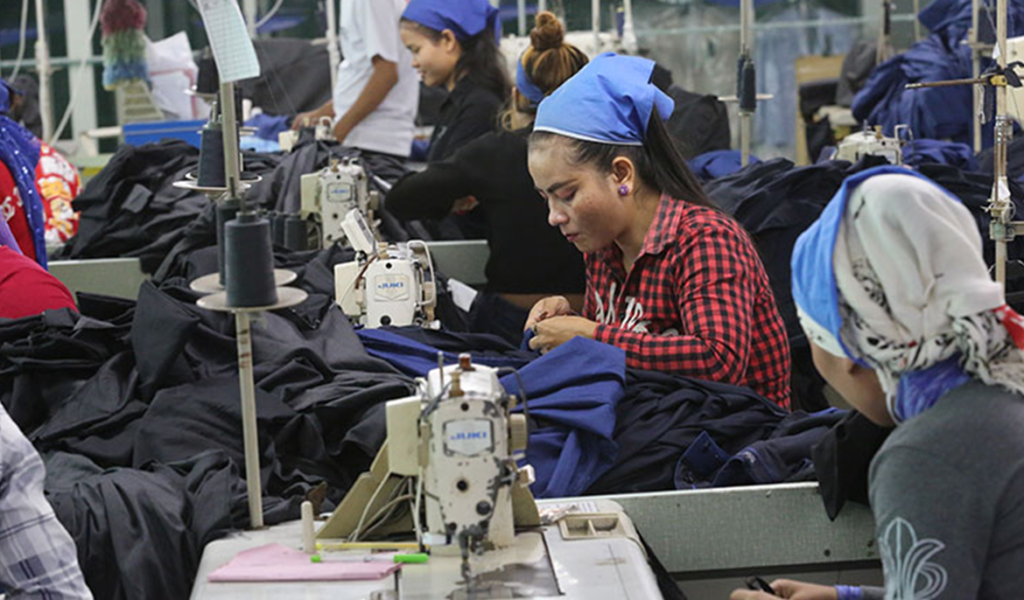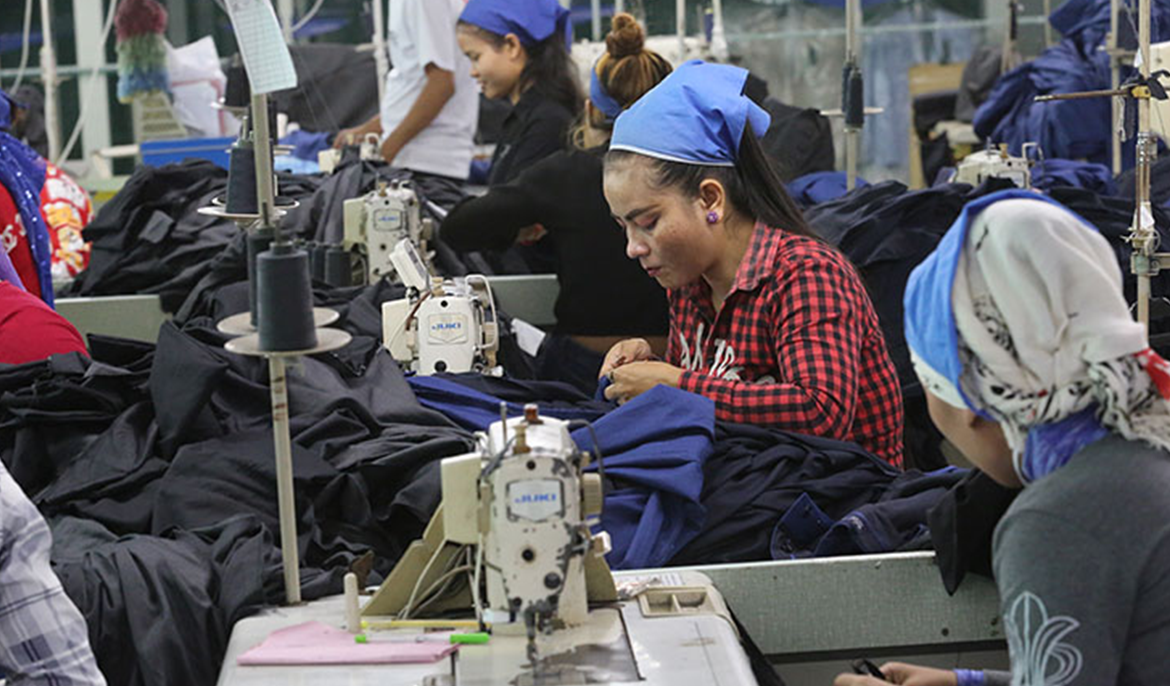The exports of garments, footwear
and travel goods (GFT) rose by 21.64 percent in January this year, earning $967 million for the sector after declining for most of the time last year. The turnaround brought cheers to the vital sector of the Cambodian economy that employs nearly one million people.
According to the latest trade data released by the General Department of Customs and Excise (GDCE) on Monday, all segments under the GFT sector performed well in January 2024, raising their export income, compared to the same month last year.
Accordingly, the exports of knitted apparel articles and clothing accessories earned $435 million, registering a growth of 24.3 percent, compared to January 2023. Non-knitted apparel articles brought in $269 million with a growth of 30.9 percent year-on-year.
Footwear exports earned $122 million last month, an increase of 11.4 percent compared to January 2023 and articles of leather and travel goods another $122 million with a growth of 4.1 percent over the same period.
Other made-up textile articles earned $18,227 in January 2024, registering a growth of 48.1 percent, compared to the same period last year.
It is also noteworthy that Cambodia managed to achieve this growth in exports despite trade barriers such as the non-renewal of the Generalized System of Preferences (GSP) by the US and the nearly 20 percent reduction in Everything But Arms (EBA) benefits by the European Union (EU), two of the biggest markets for the GFT goods.
The GFT sector is one of the biggest employment generators in the country and has created nearly one million direct jobs, according to the International Labour Organisation (ILO). The sector accounted for 11 percent of the economy and contributed around 50 percent of Cambodia’s real GDP growth as per its estimates in 2021.
It is also hoped that the turnaround in GFT exports this January will continue for the rest of the year and stem the loss of jobs and closure of factories. The Cambodian government in March 2023 started providing an allowance of $40 a month to each worker in the GFT sector whose labour contract was suspended following a slowdown in global demand.
It may be recalled that Cambodia’s GFT exports declined by 13.31 percent in 2023 amid global challenges, from $12.80 billion earned in 2022 to $11.09 billion, leading to the suspension of work for many factory employees.
The decline in GFT goods exports that started in the latter half of 2022 continued last year too even as almost all other sectors registered growth in exports in 2023. The decline in GFT goods exports in 2023 has also resulted in calls from experts to reduce the over-reliance on the sector and diversification of exports by encouraging other sectors as well.
The country’s dependency on the GFT sector as both a primary contributor to economic growth, as well as to private household income, meant that any decline in GFT exports is likely to have a deep impact.
Cambodia, meanwhile, is facing stiff competition from other Asian countries such as Bangladesh in the GFT sector. Bangladesh increased its garment exports by 10 percent in 2023 to an all-time high of $47 billion, four times that of Cambodia.
This also calls for skills development in the sector in Cambodia to increase the productivity of workers. Further, it should implement cost-effective measures such as the promotion of renewable energy sources including solar to regain the competitive edge.
Speaking with Khmer Times, recently, Massimiliano Tropeano, Sustainability and Garment Expert of the European Chamber of Commerce in Cambodia (EuroCham), underscored the need for Cambodia’s GFT sector to increase its competitiveness.
According to him, having a progressive regulation and tariff on installing solar panels will enable the sector to be far more competitive and in turn help it hire more workers and earn more revenues for the country.



